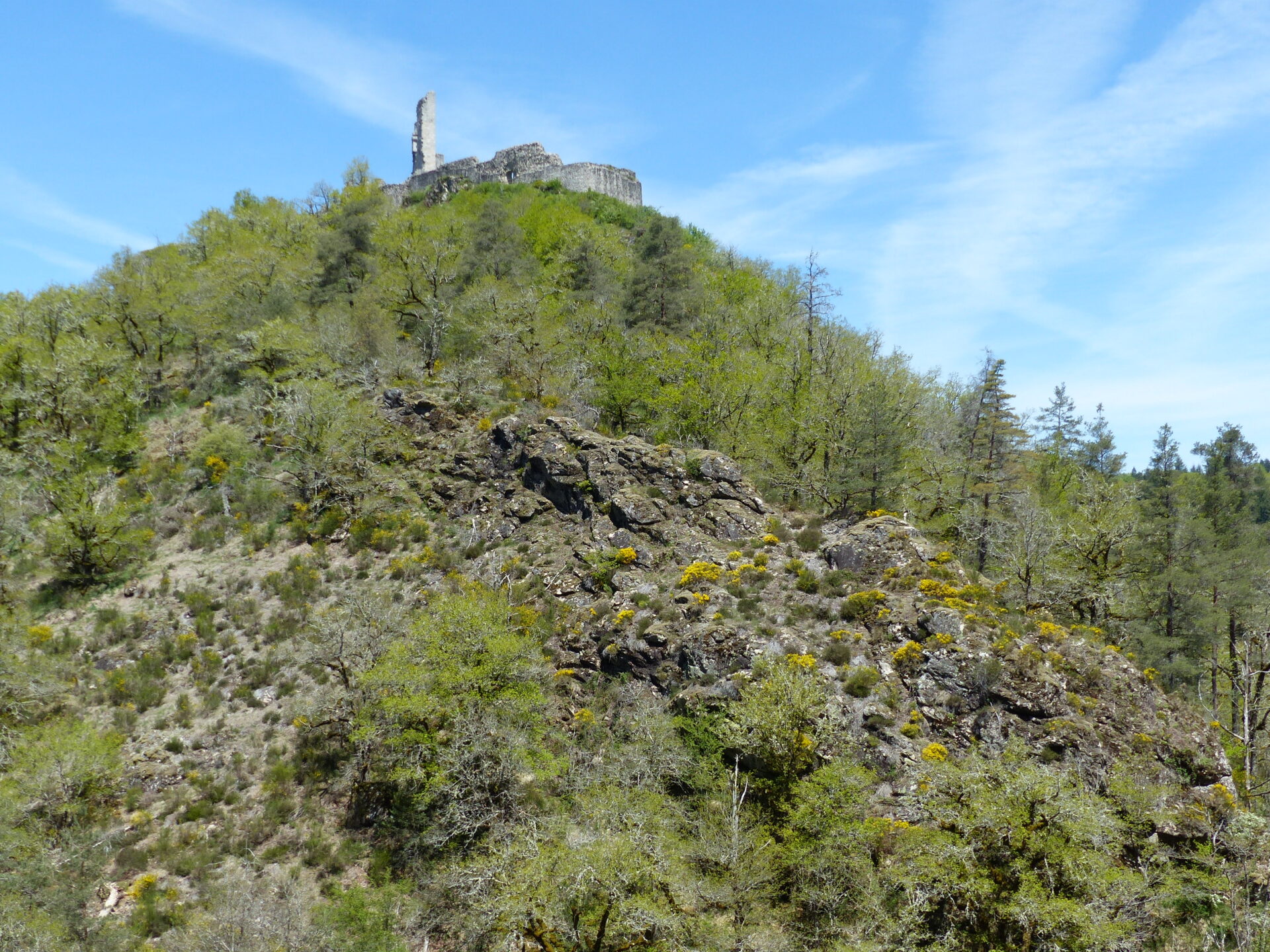Nature & environment
From its enclosure to its surroundings, the Castle of Ventadour shelters an exceptional natural environment. Fauna and flora coexist and reflect the unspoiled nature found in Correze.

An exceptional landscape
Perched on its rocky spur, made of granite and quartz, the Castle of Ventadour overlooks two tributaries of the Luzège river: the Soudeillette to the northeast, and the Vigne stream to the south. Over the millennia, these two rivers have dug over two large defensive ditches of a hundred meters deep. These slopes, devoid of forest at the beginning of the last century, were entirely covered with heathland with bell heather (Erica cinerea) and calluna (Calluna vulgaris). Today, the sheep have abandoned the moor. A few relics of this environment, where the purgative broom (Cytisus purgans) is mixed, are still visible below the eastern end of the spur.
Today, the forest has recolonized these steep slopes and constitutes environments qualified as forest of slopes and ravines. On the northern slope, a mixed forest of lime, beech and chestnut trees dominates. On the drier southern slope, the pedunculate oak (Quercus robur) has developed.
A rare flora
One of the natural peculiarities of the site stems from the very construction of the castle. The significant use of lime to join the granite fittings has modified the acid nature of the soil of the castle and its surroundings, and has allowed the installation of a remarkable flora which appreciates calcareous and neutral soils. The Ventadour site houses:
Daphnée lauréole
This small evergreen shrub from 50cm to 1m is also called wood laurel or purgative laurel. In April, the shrub is adorned with small clusters of discreet yellow-greenish flowers, which give green then black fruits (drupes) in June. It is a semi-shade species that grows under forest cover. It is protected in Limousin.
Inule squarreuse
Vipérine commune
This biennial plant takes its name from the very long stamens that protrude from the flowers like a serpent’s tongue and from its triangle-shaped seeds reminiscent of a Viper’s head. Its leaves at the base in a rosette and its blue nectariferous flowers arranged in spikes attract bees, bumblebees and butterflies.
A discreet fauna
Rock swallow
This bird appreciates the rocky slopes of the gorges, large buildings such as dams or monuments such as the castle. It differs from other swallows by its brown and gray color on the top, its sand-colored belly and its tail with small white spots. Its winter absence is only of short duration since we can observe this swallow from the end of February to the end of November. April is the time to consolidate the half-bowl shaped nests, made of mud and roots. It will lead one to two broods a year that feed on tiny insects caught in flight.
The european otter
Apart from the deer, wild boar, marten and squirrels that inhabit the woods, the Soudeillette river is home to a discreet mammal, the European Otter (Lutra lutra).
Trapped for a long time for its fur and accused of being too big a consumer of fish, the otter could have completely disappeared from our waterways. Protected since 1976, its population has gradually recolonized many territories. Nocturnal, this fascinating animal remains difficult to observe. Its anatomy, slender body, flattened head on top and webbed feet, make it a formidable swimmer. Carnivorous, the otter delights in fish, crayfish, molluscs or insects. To make sure of its presence, you have to locate its flows on the banks of streams or ponds, but above all, its prints (droppings), made up of scales, fish bones whose musky smell, reminiscent of the crab.
To find out more about the natural environment that surround the Castle of Ventadour, activities and events are regurarly organized . Check out the program here:
